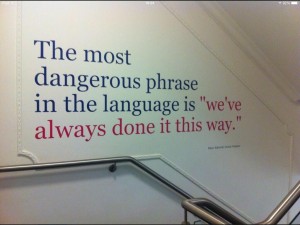Modifications and accommodations happen daily in every classroom in Ontario. Teachers strive hard to make sure that their students have the necessary tools and supports to help them achieve the expectations of the Ontario Curriculum or modified goals. The following are some of the accommodations and/or modifications that I have used this year with a focus on the most common tool used in music…instruments!
When you ask my students what their favorite part of music is, many of them would answer quickly that they like using the instruments. I agree, instruments are AWESOME, but they can also be very challenging for students with impairments in fine motor skills, breath control, impulse control or visual acuity. To help these students, try a few of the following tricks…
- Xylophones- Most xylophones have removable bars for students who are overwhelmed with all of the notes laid out before them. I take the bars off that the students don’t need to play a particular song. I also rearrange the bars to make sections of the music more playable for some students. For example, I will move the E and F bars away from the G and A bars so that the student can more easily see the space between the two and identify them as separate. Selecting only part of the melody or accompaniment can also give students with processing difficulties a chance to keep up with the pace of the music. For my students with impulse control challenges, I give them a heads up that while I am giving the instructions I will be holding their mallets and as soon as we start playing I will return them. Furthermore, improvisation can be your student’s best friend on the xylophone as it takes the pressure off of playing specific notes. Finally, metallophones have much better contrast for students with visual impairments than regular xylophones.
- Recorders- To help students match their fingers to the right holes on the recorder, I have used small pieces of coloured electrical tape. I put a small piece of blue on the first hole of the recorder and put a small piece of blue on their pointer finger of their left hand. I add one finger at a time and work towards removing the tape when the student is ready. I have also matched a colour coded system to the music that they are reading. For students who have large challenges in fine motor skills, I have also taped the back hole for the first section of the year to let them focus on the front holes.
- Drums and Percussion Instruments- When it comes to the percussion family, instrument choice becomes very important. Maracas, bells and guiros are some of the more difficult instruments to use to produce clear rhythms. Rhythm sticks and bucket drums are a much better choice as the sound is more easily produced and controlled. Another helpful tool is to use words to learn rhythms. Using words to help students learn rhythms is great for all students but is especially important for students who need extra support. From the tabla in India to the taiko drum in Japan, there are so many countries that use words to share rhythms. Simple or repetitive words are much more accessible than musical notation for many students.

